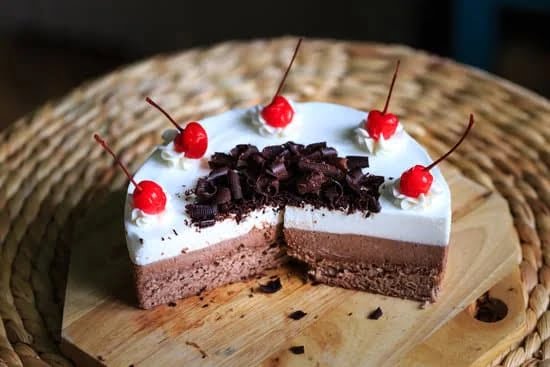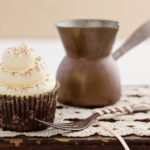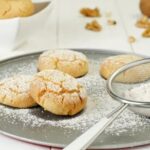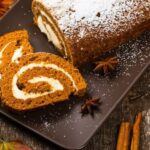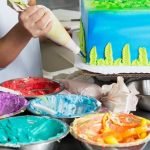Are you ready to learn how to make and decorate a cake that will impress your friends and family? Whether you’re a beginner or have some experience in the kitchen, this guide will walk you through the process of creating a delicious and visually appealing cake. From choosing the perfect recipe to adding special touches, we’ve got you covered.
In the following sections, we will discuss everything from selecting the right cake recipe for your skill level to gathering the necessary ingredients and tools. We’ll also provide step-by-step instructions for preparing and baking the cake, as well as exploring various techniques for frosting, icing, and decorating. Additionally, we’ll offer troubleshooting tips for common baking issues and decorating mishaps.
By the end of this article, you’ll have all the knowledge and inspiration you need to create a stunning cake that reflects your creativity and personal touch. So, let’s get started on this exciting journey of cake making and decorating.
Choosing the Perfect Cake Recipe
When it comes to making and decorating a cake, one of the most important decisions you will make is choosing the perfect cake recipe. The right recipe can set the stage for a delicious and visually appealing cake that will impress your friends and family. There are many different types of cakes, each with its own flavor profile, so it’s essential to choose one that suits your taste and skill level.
For beginners, it’s often best to start with a simple recipe such as a classic vanilla or chocolate cake. These recipes typically require fewer ingredients and are easier to execute, making them perfect for those new to baking. As you gain confidence and experience, you can then move on to more complex recipes such as fruit-filled or layered cakes.
| Cake Type | Considerations |
|---|---|
| Classic Vanilla or Chocolate | Best for beginners, simple ingredients |
| Fruit-Filled or Layered Cakes | More complex, suitable for experienced bakers |
| Dietary Restrictions | Consider gluten-free or vegan alternatives if needed |
By choosing the perfect cake recipe that aligns with your skills and preferences, you can set yourself up for success in creating a beautiful and delicious cake. After all, a great cake starts with a great recipe.
Gathering the Necessary Ingredients and Tools
When it comes to making and decorating a cake, having the right ingredients and tools on hand is essential for success. Here are some key items you’ll need to gather before you start your cake-making adventure:
- Flour: Whether you use all-purpose flour, cake flour, or another type, having the right flour is crucial for the texture of your cake.
- Sugar: Granulated sugar is a staple in most cake recipes, but depending on the type of cake you’re making, you may also need brown sugar or confectioners’ sugar for frosting.
- Eggs: Eggs provide structure and moisture to cakes, so be sure to have plenty on hand.
- Butter or oil: Depending on your recipe, you’ll need either butter or oil (or sometimes both) to add richness and moisture to your cake.
In addition to ingredients, there are several tools that are indispensable for cake making and decorating. Some essential tools include:
- Cake pans: To bake your cake layers in
- Mixer: Whether it’s a stand mixer or a hand mixer, having one will make mixing your batter much easier
- Offset spatula: This tool is essential for spreading frosting and smoothing it out on your cake
- Piping bags and tips: These are necessary if you want to do any piping work with frosting or icing on your cake
Once you have gathered all of the necessary ingredients and tools, you can feel confident in taking the next steps towards creating a delicious and visually appealing masterpiece.
Preparing and Baking the Cake
Step-by-Step Cake Preparation
To make a delicious cake, it is essential to follow the instructions of the chosen recipe carefully. Start by preheating the oven to the specified temperature and preparing the baking pans with parchment paper or grease. Then, gather all the necessary ingredients and measure them accurately before combining them in a mixing bowl.
Once the batter is well-mixed, pour it into the prepared pans and place them in the oven. As the cake bakes, use a toothpick or cake tester to check for doneness before removing it from the oven.
Troubleshooting Baking Issues
Sometimes, even when following a recipe diligently, issues can arise during the baking process. Common problems include uneven rising, sinking in the middle, or over-browning of the cake. To prevent these issues, ensure that all ingredients are at room temperature before starting and that leavening agents are fresh. In addition, be mindful of not overmixing the batter or opening the oven door too often during baking.
Testing for Doneness
One crucial aspect of successful cake baking is knowing when it’s fully cooked. To test for doneness, insert a toothpick or cake tester into the center of the cake – if it comes out clean or with just a few crumbs clinging to it, then your cake is ready to come out of the oven. Be careful not to underbake or overbake your cakes as this can greatly affect its texture and taste.
By following these steps and tips for preparing and baking a delicious cake, you’ll be well on your way to creating a mouthwatering masterpiece that is ready for decorating.
Decorating the Cake
When it comes to decorating a cake, there are countless techniques and creative ideas to take your dessert from ordinary to extraordinary. Whether you’re a beginner or an experienced baker, the key to successful cake decoration lies in having the right tools and a good understanding of various decorating methods. One classic technique is frosting the cake with buttercream, which can be easily piped into different designs and shapes.
Fondant is another popular option for creating smooth and elegant finishes on cakes. Additionally, incorporating fresh flowers, edible glitter, or unique sculpted fondant decorations can add an extra level of artistry to your creation.
To begin decorating a cake, it’s important to ensure that the baked layers are completely cooled before applying any frosting or decorative elements. Once the cake is ready, start by arranging the layers and filling them with your preferred frosting or filling.
For a more professional look, consider using a turntable to evenly frost the cake and achieve clean lines. From here, you can let your creativity run wild by experimenting with different icing techniques such as piping rosettes, creating ombre effects with food coloring, or even mastering the art of writing messages on cakes.
It’s also essential to keep in mind the theme or occasion for which the cake is being made. For example, if it’s a birthday celebration, consider incorporating themed decorations such as candy or sprinkles that reflect the recipient’s interests.
If it’s for a wedding or anniversary, opt for elegant designs such as delicate lace patterns or metallic accents like gold leaf. Ultimately, decorating a cake is an opportunity to showcase your personality and artistic flair while delighting others with a visually stunning treat.
| Decorating Techniques | Ideas for Themes/Occasions |
|---|---|
| Buttercream piping | Birthday – incorporate themed decorations such as candy or sprinkles |
| Fondant sculpting | Wedding/Anniversary – opt for delicate lace patterns or metallic accents like gold leaf |
| Ombre icing effects | Celebratory milestones – use numbers or special symbols related to the occasion |
Adding Special Touches
When it comes to making and decorating a cake, adding special touches can take your creation to the next level. Whether you’re baking a birthday cake, a wedding cake, or just a special treat for yourself, there are countless ways to make your cake stand out and impress your guests. Here are some creative ideas for adding personalized and unique touches to your cake:
- Custom Cake Toppers: Consider using custom-made cake toppers that reflect the theme of the occasion or the recipient’s personality. You can find beautifully crafted toppers made of wood, acrylic, or metal that can be personalized with names, dates, or special messages.
- Edible Decorations: Adding edible decorations such as fresh flowers, macarons, chocolate shavings, or fruit can elevate the visual appeal of your cake. Just make sure that any non-traditional cake decorations are safe for consumption and complement the flavor of the cake.
- Hand-Painted Designs: If you have an artistic flair, try hand-painting intricate designs on your cake with food-safe paints. This is an excellent way to personalize your creation and showcase your creativity.
Incorporating special touches into your cakes not only demonstrates care and thoughtfulness but also allows you to showcase your personal style and creativity. With these ideas in mind, you can transform a simple cake into a stunning centerpiece that will be remembered long after it’s been enjoyed.
By adding special touches to their creations, amateur bakers and professional pastry chefs alike have the opportunity to turn an ordinary dessert into an extraordinary work of edible art. With these tips for adding personalized and unique touches to cakes, anyone can create visually stunning treats that taste as good as they look.
Troubleshooting Tips
Addressing Common Decorating Mishaps and Offering Solutions
Decorating a cake can be a fun and creative process, but it’s not without its challenges. As you embark on the journey of making and decorating a cake, you may encounter common decorating mishaps such as uneven icing, air bubbles in frosting, or cracked fondant. One way to address these issues is by taking your time and working with patience. If you notice any imperfections, don’t panic – there are simple solutions to many of these mishaps.
For example, if your icing is uneven, use a hot spatula to smooth it out. If there are air bubbles in your frosting, try using a toothpick to gently release them. With a bit of ingenuity and resourcefulness, you can easily overcome these common decorating challenges.
Providing Advice for Salvaging a Cake Gone Wrong
Sometimes, despite our best efforts, things don’t go according to plan when making and decorating a cake. It’s important not to get discouraged if your cake ends up not turning out as expected. In the event that your cake has cracked during baking or an unexpected design mistake occurs during the decoration process, all hope is not lost.
You can salvage the situation by getting creative with cover-up techniques such as strategically placing extra decorations or using edible paint to mask imperfections. Remember that mistakes are just opportunities for creativity and problem-solving.
Encouraging Poultry Keepers to Put Their Newfound Knowledge Into Practice
As you continue learning how to make and decorate cakes, keep in mind that practice makes perfect. Don’t be afraid to experiment with new techniques and ideas – this is where true creativity blossoms. With your newfound knowledge of troubleshooting tips and solutions for salvaging mistakes, you’re well-equipped to tackle any cake-making challenge that comes your way.
Embrace the process of learning from both success and failure, because each experience will only make you more confident in your ability to create beautiful and delicious cakes. So roll up your sleeves, gather your ingredients, and let your imagination run wild as you embark on your next cake-making adventure.
Conclusion
In conclusion, learning how to make and decorate a cake is an enjoyable and rewarding skill that anyone can develop. By choosing the perfect cake recipe and gathering the necessary ingredients and tools, you can set yourself up for success in the kitchen. Preparing and baking the cake requires attention to detail, but with the troubleshooting tips provided, you can overcome any baking obstacles that may arise.
Once the cake is baked and cooled, the real fun begins with decorating. Whether you prefer simple frosting techniques or intricate designs, there are endless possibilities for making your cake visually appealing. From birthdays to weddings, there are numerous occasions where your newfound knowledge can shine as you create beautiful cakes for your loved ones.
In essence, with this step-by-step guide, it’s clear that creating a delicious and visually stunning cake is within reach for anyone willing to put in the time and effort. So go ahead – grab your ingredients and tools, follow these instructions, and let your creativity soar as you embark on your journey to becoming a proficient cake maker and decorator.
Frequently Asked Questions
What Are the Steps in Decorating a Cake?
Decorating a cake involves several steps to ensure a beautiful and delicious final product. First, it’s important to bake the cake layers and allow them to cool completely. Then, the cakes should be leveled and stacked with a layer of frosting in between.
The next step is crumb coating the cake with a thin layer of frosting to seal in any crumbs. Finally, the cake can be decorated with frosting, fondant, or other edible decorations as desired.
What Are the 3 Tips for Preparing to Decorate a Cake?
When preparing to decorate a cake, it’s crucial to ensure that all necessary tools and ingredients are readily available. This includes having the appropriate frosting tips, food coloring, and any decorative elements on hand before starting the process.
It’s also helpful to have a clean and flat surface for decorating the cake and to make sure that the cake layers are level before stacking.
How to Decorate a Cake Easily?
Decorating a cake can be made easier by using simple techniques and tools. One way to easily decorate a cake is by using pre-made decorations like edible flowers or sugar butterflies which can simply be placed on top of the frosted cake.
Another tip for easy decorating is to use stencils or templates to create intricate designs with powdered sugar or cocoa powder without needing advanced piping skills. Additionally, using smooth fondant icing on the cake can create a sleek and polished look without much effort.

Welcome to our cake decorating blog! My name is Destiny Flores, and I am the proud owner of a cake decorating business named Cake Karma. Our mission is to provide delicious, beautiful cakes for all occasions. We specialize in creating custom cakes that are tailored specifically to each customer’s individual needs and tastes.

